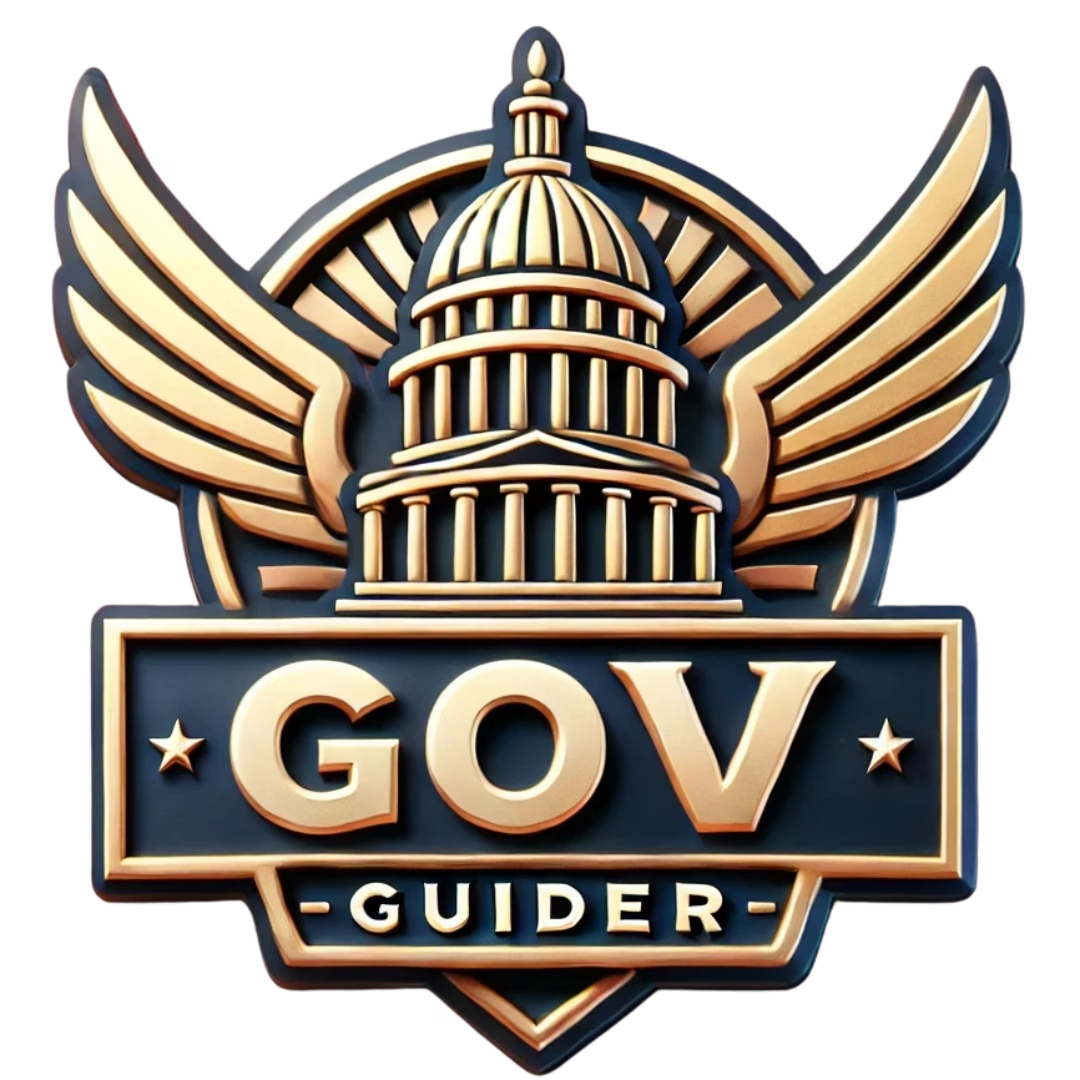Key Takeaways
- Discover essential cash help from government programs, including food, housing, and healthcare assistance.
- Learn about free gas vouchers that can alleviate transportation costs for those in urgent need.
- Understand specific state programs, such as Minnesota’s General Assistance and Arizona’s Cash Assistance, tailored to local residents.
- Explore resources like United Way 211 for immediate financial help and guidance on available assistance options.
- Maximize your financial aid opportunities by assessing eligibility for various government grants and subsidies.
In today’s challenging economic landscape, many individuals and families find themselves seeking cash help from government programs to navigate financial hardships. This article delves into the various government assistance programs available, including essential resources like free gas vouchers and other financial aid options. We will explore critical questions such as, How much is Minnesota cash assistance? and What is the financial hardship grant in Minnesota?, providing clarity on the support you can access. Additionally, we will guide you through urgent financial help resources, state-specific cash assistance programs, and the benefits of grants and vouchers for financial relief. Whether you’re looking for finance help or specific information on gasoline grant assistance, this comprehensive guide aims to equip you with the knowledge needed to maximize your financial aid opportunities and secure the assistance you deserve.
Understanding Cash Help from Government
How much is Minnesota cash assistance?
In Minnesota, cash assistance is primarily provided through the General Assistance (GA) program, which offers financial support to individuals and couples facing economic hardship. As of the latest updates, the monthly cash assistance amounts are as follows:
- Individuals: Eligible individuals can receive up to $203 per month.
- Couples: Couples without children may qualify for up to $260 per month.
Eligibility for General Assistance is contingent upon several criteria, including having little or no income and not having children in the household. This program is designed to help those who are struggling to meet their basic needs.
For more detailed information on eligibility requirements and application procedures, individuals can visit the Minnesota Department of Human Services website or consult resources like Gov Guider, which provides guidance on accessing state assistance programs.
Recent studies indicate that cash assistance programs can significantly alleviate poverty and improve overall well-being for recipients (Source: Minnesota Department of Human Services, 2023).
Overview of government assistance programs available
Government assistance programs are designed to provide financial help to individuals and families in need. These programs can vary widely, offering support for housing, food, healthcare, and more. Some key types of assistance include:
- Cash Assistance Programs: These programs, such as the General Assistance in Minnesota, provide direct financial support to help cover basic living expenses.
- Food Assistance: Programs like the Supplemental Nutrition Assistance Program (SNAP) help low-income families access nutritious food.
- Healthcare Assistance: Medicaid and other healthcare programs offer medical coverage for eligible individuals and families.
- Utility Assistance: Programs that help with utility bills, such as the Low-Income Home Energy Assistance Program (LIHEAP), are crucial for families struggling to pay their energy costs.
For those seeking financial help, it’s essential to explore all available options. Resources like Gov Guider can provide valuable insights into navigating these programs effectively.

Exploring Financial Assistance Options
When seeking cash help from government programs, it’s essential to understand the various financial assistance options available. Many individuals may not be aware of the range of resources they can access, which can significantly alleviate financial burdens. Below, I outline some of the most valuable resources and programs that can provide immediate support.
What free stuff can I get from the government?
You can access a variety of free resources and assistance programs provided by the government. Here are some key areas where you can find support:
- Food Assistance: Programs like the Supplemental Nutrition Assistance Program (SNAP) offer financial aid to purchase food. Additionally, the Women, Infants, and Children (WIC) program provides nutritional support for low-income pregnant women and young children.
- Health Insurance: The Affordable Care Act (ACA) allows individuals to enroll in health insurance plans through the Health Insurance Marketplace. Medicaid and Medicare also provide health coverage for eligible low-income individuals and seniors, respectively.
- Housing Assistance: The U.S. Department of Housing and Urban Development (HUD) offers various programs, including public housing and Housing Choice Vouchers, to help low-income families afford safe and decent housing.
- Utility Bill Assistance: The Low Income Home Energy Assistance Program (LIHEAP) helps eligible households with their heating and cooling energy costs, ensuring that families can maintain a safe living environment.
- Welfare and Financial Assistance: Temporary Assistance for Needy Families (TANF) provides financial support to families in need, helping them achieve self-sufficiency.
- Social Security Benefits: Social Security provides financial assistance to retirees, disabled individuals, and survivors of deceased workers, ensuring a basic level of income for those in need.
- Government Checks and Payments: Various programs, including unemployment benefits and stimulus payments, provide direct financial assistance to eligible individuals and families during times of economic hardship.
For more detailed information on these programs, you can visit USAGov, which serves as a comprehensive resource for government benefits and assistance.
Types of subsidy programs for low-income families
Subsidy programs play a crucial role in supporting low-income families by providing financial assistance that helps cover essential living costs. Here are some key types of subsidy programs available:
- Housing Subsidies: Programs like the Housing Choice Voucher Program allow families to rent housing in the private market while receiving financial assistance to cover a portion of their rent.
- Child Care Subsidies: The Child Care and Development Fund (CCDF) provides financial assistance to low-income families to help pay for child care, enabling parents to work or attend school.
- Energy Assistance Programs: Programs such as LIHEAP provide financial aid to help low-income households pay their energy bills, ensuring they can maintain a comfortable living environment.
- Food Subsidies: In addition to SNAP, programs like the National School Lunch Program offer free or reduced-price meals to children from low-income families.
These subsidy programs are designed to ease the financial strain on families, allowing them to focus on achieving stability and self-sufficiency. For more information on government assistance programs, visit government assistance programs.
Urgent Financial Help Resources
If you find yourself in a situation where you need immediate financial assistance, there are several resources available to help you manage your situation effectively. Understanding where to turn can make a significant difference in alleviating financial stress.
Who can help me with money urgently?
When seeking urgent financial help, consider the following resources:
- United Way 211: This is a vital resource for individuals seeking immediate financial assistance. By dialing 211, you can connect with a local specialist who can provide information on available resources, including emergency funds, food assistance, and housing support. United Way 211 is operational in many areas across the United States and is known for its comprehensive database of local services.
- Local Nonprofits and Charities: Many local organizations offer emergency financial assistance. These can include churches, food banks, and community service organizations. Websites like Charity Navigator can help you find reputable charities in your area.
- Government Assistance Programs: Depending on your circumstances, you may qualify for government assistance programs such as Temporary Assistance for Needy Families (TANF) or Supplemental Nutrition Assistance Program (SNAP). These programs can provide immediate financial relief and support.
- Credit Counseling Services: Nonprofit credit counseling agencies can assist you in managing your debts and creating a budget. They can also help you negotiate with creditors for lower payments or settlements.
- Online Platforms: Websites like GoFundMe allow individuals to create fundraising campaigns for urgent financial needs. While this may not guarantee funds, it can be a way to reach out to your community for support.
- Local Government Resources: Check your local government’s website for additional resources. Some municipalities have emergency funds set aside for residents facing financial hardship.
For more detailed information on financial assistance options, visit the Benefits.gov or the USA.gov for guidance on available programs.
I need financial help immediately: Steps to take
Taking immediate action is crucial when you need financial help. Here are the steps you should consider:
- Assess Your Situation: Determine the exact nature of your financial crisis. Are you facing eviction, unable to pay for food, or struggling with medical bills? Understanding your needs will help you find the right resources.
- Contact Local Resources: Reach out to local nonprofits, charities, and government assistance programs. Utilize resources like government assistance programs to find immediate support.
- Gather Necessary Documentation: Prepare any required documentation, such as proof of income, identification, and bills. This will streamline the application process for assistance.
- Apply for Assistance: Complete applications for any programs you qualify for. Be thorough and honest in your applications to avoid delays.
- Follow Up: After applying, follow up with the organizations to check on the status of your application and ensure you receive the help you need.
For ongoing support, consider visiting a finance help center to explore additional resources and programs available to you.
State-Specific Cash Assistance Programs
Understanding the various cash assistance programs available across different states is crucial for individuals seeking financial help. Each state has its own guidelines, benefits, and eligibility criteria that can significantly affect the amount of support you receive. In this section, we will explore the cash assistance program in Arizona, detailing how much it pays and providing an overview of financial assistance from government programs in various states.
How much does AZ cash assistance pay?
Cash Assistance (CA) in Arizona provides financial support to eligible families and individuals in need. The amount of cash assistance you receive is determined by your household size and income level.
- Maximum Benefits: For a family of three, the maximum cash assistance benefit is $347 per month if there is no earned income. This amount decreases as your income increases, reflecting the program’s design to support those with the greatest need.
- Income Considerations: There are two types of income considered in the CA calculation:
- Earned Income: This includes wages from employment. The more you earn, the lower your cash assistance will be.
- Unearned Income: This includes benefits such as Social Security Disability Insurance (SSDI). This type of income is treated differently in the calculation of benefits.
- Eligibility Requirements: To qualify for cash assistance, applicants must meet specific criteria, including residency in Arizona, income limits, and other factors. It is essential to provide accurate information during the application process to determine eligibility correctly.
- Application Process: Interested individuals can apply for cash assistance through the Arizona Department of Economic Security (DES) website or local offices. The application process may require documentation of income, residency, and family composition.
For more detailed information on eligibility and benefits, you can visit the Arizona Department of Economic Security (DES) website or refer to resources like DB101 Arizona, which provides comprehensive guidance on cash assistance programs.
Overview of financial assistance from government in different states
Financial assistance from government programs varies significantly across the United States, with each state offering unique support systems tailored to their residents’ needs. Here are some key programs available in various states:
- California: The California Work Opportunity and Responsibility to Kids (CalWORKs) program provides cash aid and services to eligible families. The amount varies based on family size and income.
- Texas: The Temporary Assistance for Needy Families (TANF) program in Texas offers financial assistance for low-income families, with benefits determined by household size and income.
- New York: New York’s Family Assistance program provides cash assistance to families with children, with benefits based on income and family composition.
- Florida: The Florida Temporary Cash Assistance (TCA) program supports families in need, with benefits adjusted according to income and household size.
For those seeking financial help, it is essential to explore the specific programs available in your state. Understanding these options can lead to better financial stability and access to necessary resources. To learn more about government assistance programs, visit Gov Guider’s resource page.

Grants and Vouchers for Financial Relief
When facing financial difficulties, understanding the various grants and vouchers available can provide essential relief. These programs are designed to assist individuals and families in navigating tough economic times, ensuring access to necessary resources. Below, we explore two significant types of financial assistance: the Financial Hardship Grant in Minnesota and free gas vouchers available online.
What is the Financial Hardship Grant in Minnesota?
The Financial Hardship Grant in Minnesota is a crucial financial assistance program established by the Minnesota Legislature, utilizing federal Child Care Stabilization Funds. This grant aims to support child care providers facing significant financial challenges, particularly in the wake of economic disruptions caused by the COVID-19 pandemic.
Key features of the Financial Hardship Grant include:
- Eligibility Criteria: Child care providers must demonstrate extreme financial hardship, which may include reduced enrollment, increased operational costs, or other economic impacts. The program is designed to assist licensed child care centers, family child care providers, and other eligible entities.
- Funding Amount: The grant provides varying amounts of financial support, depending on the provider’s specific circumstances and needs. This funding can be used to cover essential expenses such as staff salaries, rent, utilities, and supplies necessary for maintaining operations.
- Application Process: Interested providers must submit an application through the Minnesota Department of Human Services (DHS) website. The application typically requires documentation of financial hardship and operational details.
- Impact on Child Care Services: By alleviating financial burdens, the grant aims to stabilize the child care sector, ensuring that providers can continue to offer essential services to families and children in Minnesota.
- Additional Resources: For more information, providers can visit the Minnesota DHS website or contact local child care resource and referral agencies for assistance with the application process.
Accessing Free Gas Vouchers Online and Their Benefits
Free gas vouchers are another valuable resource for individuals seeking financial help from government programs. These vouchers can significantly ease the burden of transportation costs, especially for those who rely on their vehicles for work or essential errands. Here’s how to access them:
- Eligibility: Many programs require applicants to demonstrate financial need. Check local government websites or community organizations for specific eligibility criteria.
- Application Process: Applications for free gas vouchers can often be submitted online through various nonprofit organizations or government assistance programs. Ensure you have the necessary documentation ready to expedite the process.
- Benefits: Utilizing free gas cards can help alleviate transportation costs, allowing individuals to allocate their limited resources to other essential needs, such as food and housing.
- Additional Resources: For more information on gas vouchers, consider visiting the gas card from government assistance page for detailed guidance.
Maximizing Your Financial Aid
How much can I get from cash aid?
The amount you can receive from cash aid programs, such as CalWORKs in California, varies based on several key factors:
1. **Family Size**: The number of individuals in your household is a primary determinant. Larger families typically qualify for higher benefit amounts. For example, as of 2023, a family of four may receive a maximum monthly benefit of approximately $1,000, while a single individual may receive around $300.
2. **Exempt Status**: Certain exemptions can increase the maximum aid amount. Families with disabled members or those who are elderly may be eligible for additional benefits.
3. **Location**: Cash aid amounts can differ significantly based on your county or city. Urban areas may offer different rates compared to rural regions due to varying costs of living.
4. **Income and Deductions**: Your family’s total income plays a crucial role in determining aid eligibility. Higher income levels may reduce the overall aid amount. Additionally, allowable deductions, such as childcare costs or medical expenses, can affect your net income calculation.
5. **Application Process**: To determine your specific eligibility and potential benefits, you should apply through your local county assistance office. They will assess your situation based on the above factors.
For authoritative information, refer to the California Department of Social Services and local county resources, such as the CalWORKs FAQ from Fresno County and Santa Cruz County Human Services. These sources provide detailed guidelines and charts reflecting the maximum aid amounts based on family size and income levels. For further assistance, you can also consult resources like DB101 California, which offers insights into cash benefits and eligibility criteria.
Understanding $7,000 government grant for individuals and eligibility
The $7,000 government grant, particularly in the context of the coronavirus pandemic, is designed to provide financial relief to individuals facing economic hardships. This grant is part of broader federal government financial assistance programs aimed at supporting those in need. To qualify for this grant, applicants typically must meet specific eligibility criteria, including:
1. **Income Limits**: Your household income must fall below a certain threshold, which varies by state and family size.
2. **Residency Requirements**: Applicants must be legal residents of the state in which they are applying for assistance.
3. **Financial Hardship**: You may need to demonstrate that you are experiencing financial difficulties due to circumstances such as job loss, medical expenses, or other unexpected costs.
4. **Application Process**: To apply for the $7,000 grant, individuals should visit official government websites, such as [Benefits.gov](https://www.benefits.gov/), where they can find detailed application instructions and necessary forms.
Additionally, many states offer various subsidy programs that can complement this grant, providing further financial help from government resources. For those seeking assistance with transportation costs, programs like gas vouchers or free gas cards from government assistance can also be beneficial. These resources can help alleviate the burden of rising fuel prices, making it easier for individuals to access employment and essential services.
Additional Resources for Financial Help
Federal government financial assistance programs overview
The federal government offers a variety of financial assistance programs designed to support individuals and families in need. These programs include cash aid, food assistance, housing support, and healthcare subsidies. Key programs include:
- Temporary Assistance for Needy Families (TANF): Provides cash assistance to low-income families with children to help cover basic needs.
- Supplemental Nutrition Assistance Program (SNAP): Offers food assistance to eligible low-income individuals and families, helping them purchase nutritious food. For more information, visit the USDA SNAP Program.
- Medicaid: Provides health coverage for low-income individuals and families, ensuring access to necessary medical services.
- Housing Choice Voucher Program: Assists low-income families in affording safe and decent housing in the private market.
These federal programs are crucial for those seeking financial assistance from government resources. For a comprehensive overview of available programs, you can visit Benefits.gov.
Finding a finance help center near you for ongoing support
Accessing local finance help centers can provide ongoing support for individuals facing financial difficulties. These centers often offer services such as budgeting assistance, debt management, and access to government assistance programs. To find a finance help center near you:
- Search online for local nonprofit organizations that provide financial counseling and assistance.
- Visit USA.gov to find government resources and local assistance programs.
- Contact community organizations or churches that may offer financial help or can direct you to relevant resources.
Utilizing these resources can help you navigate your financial challenges and connect you with programs like government assistance programs and gas card from government assistance initiatives.




